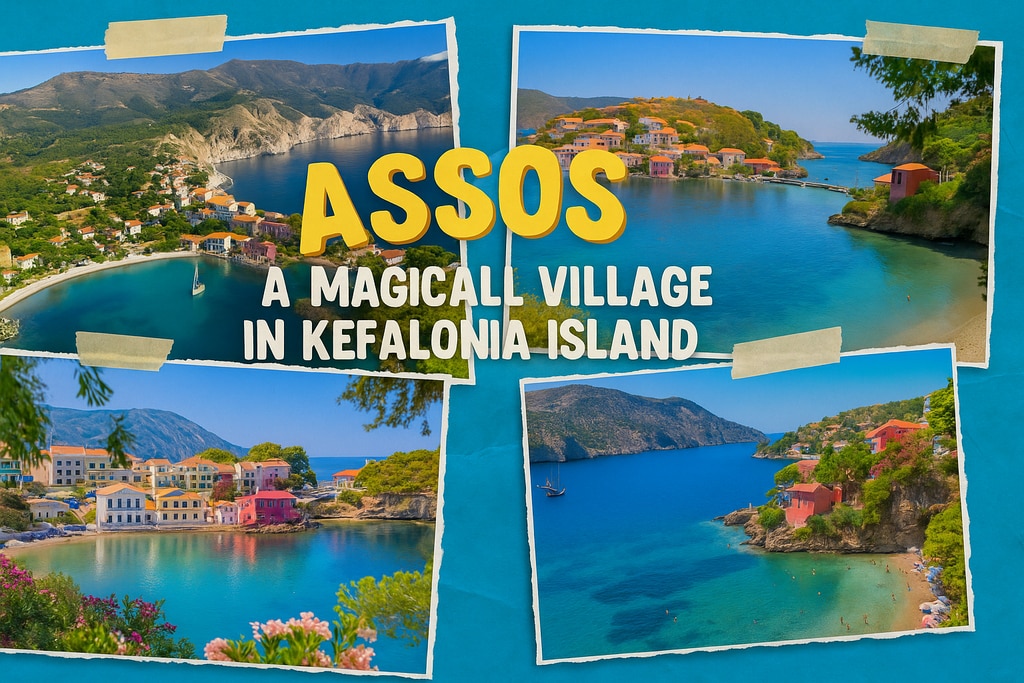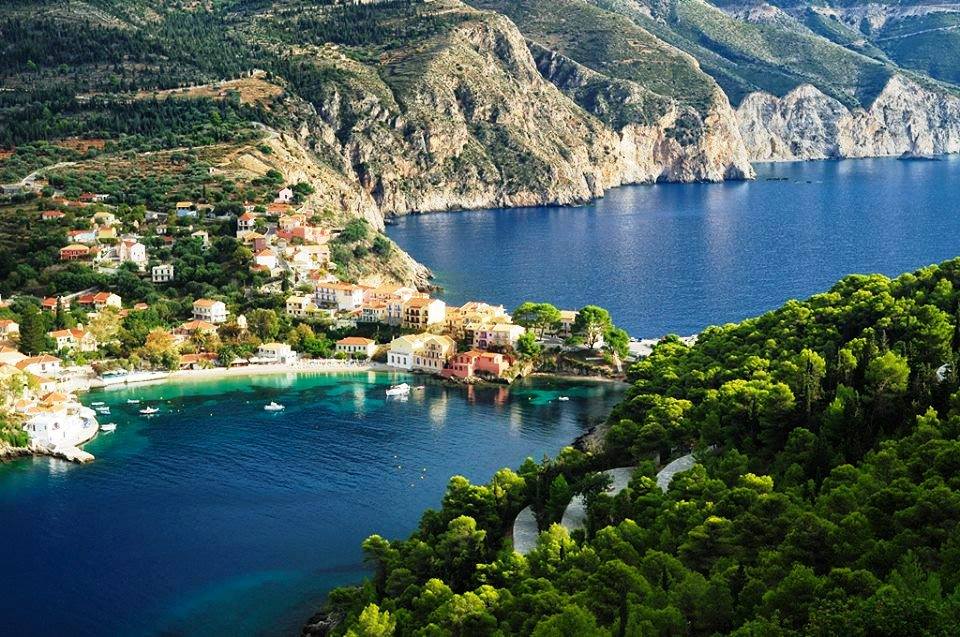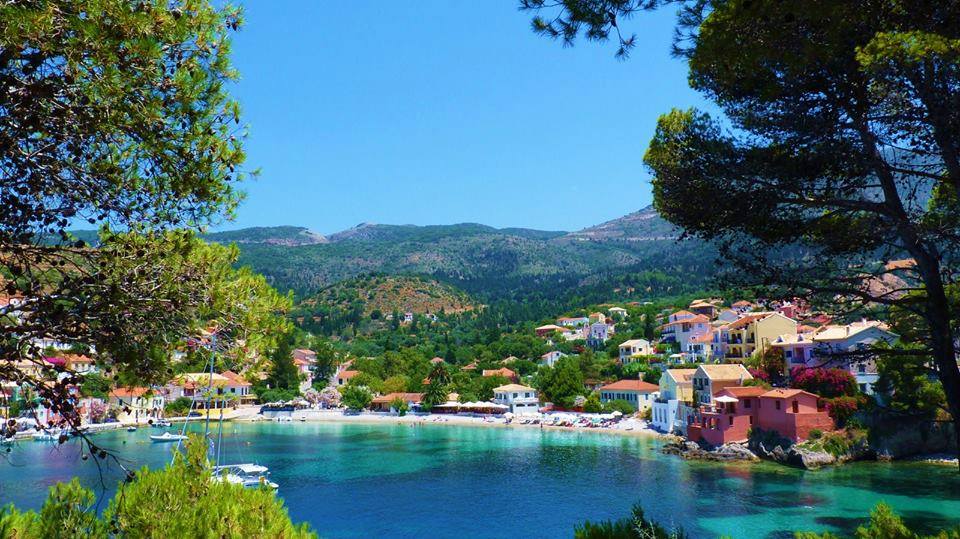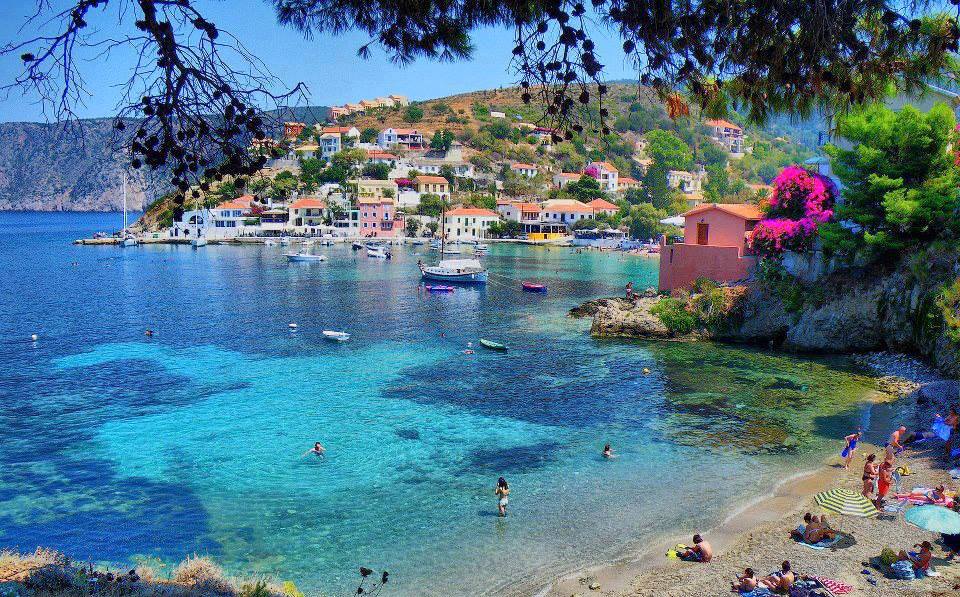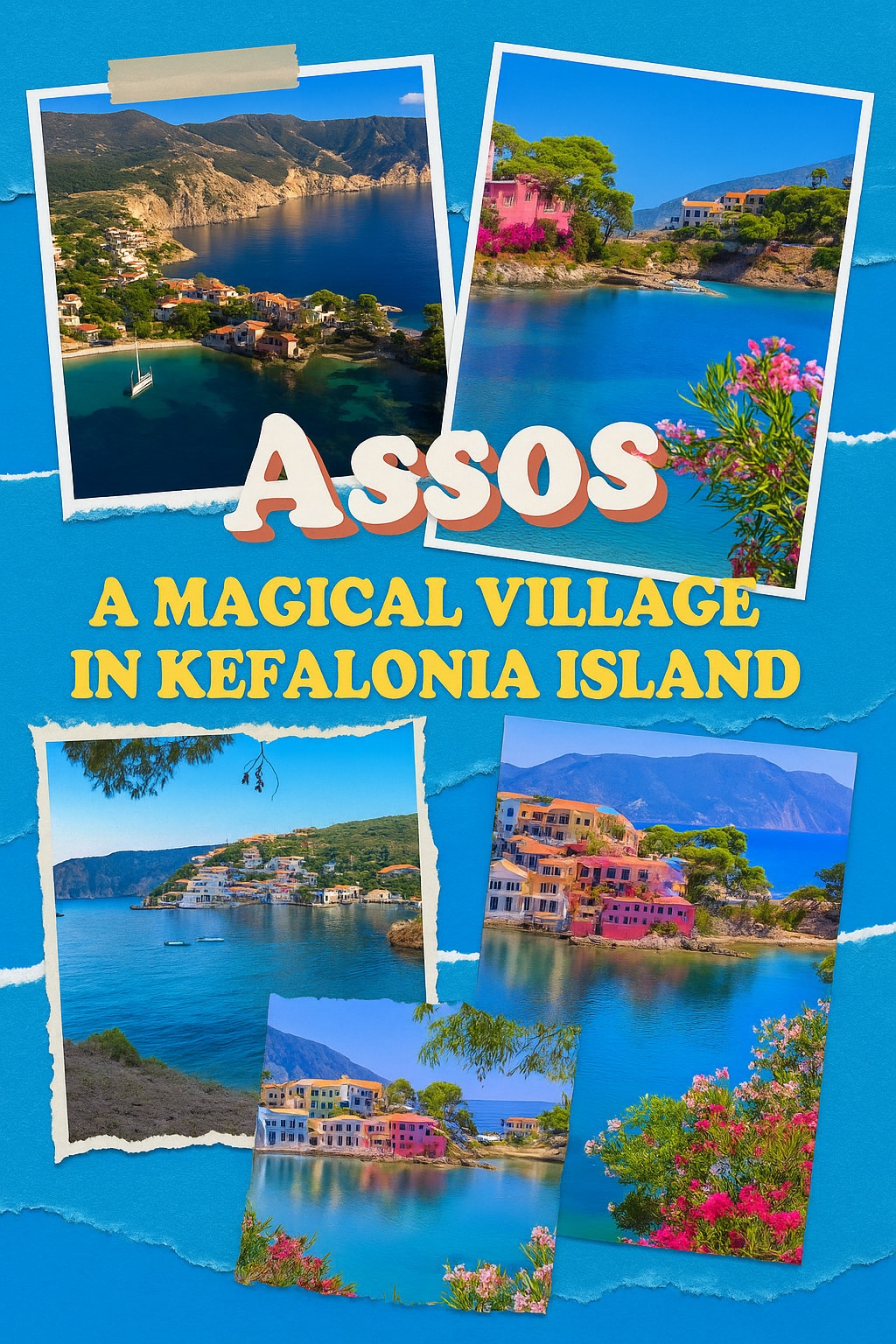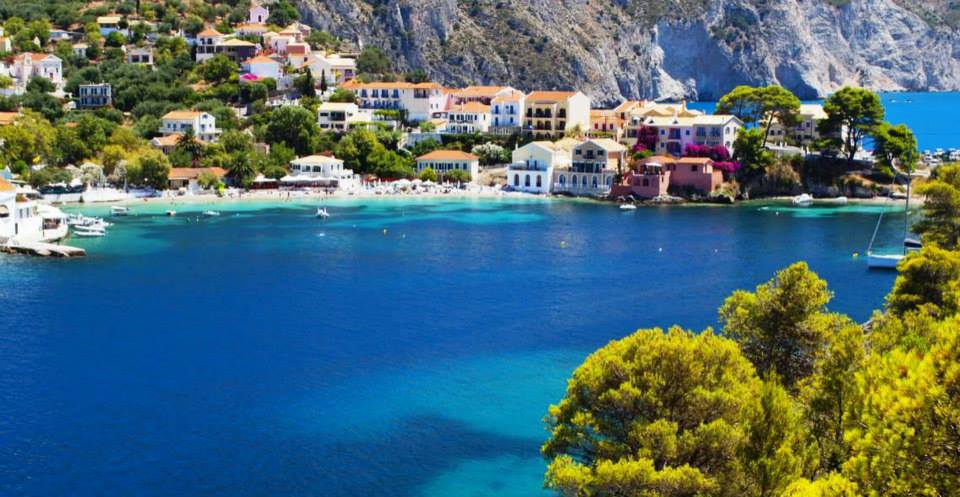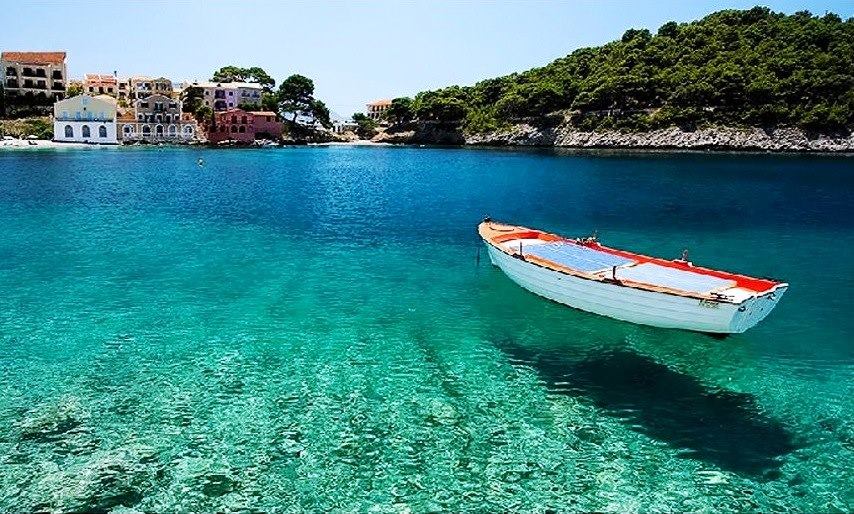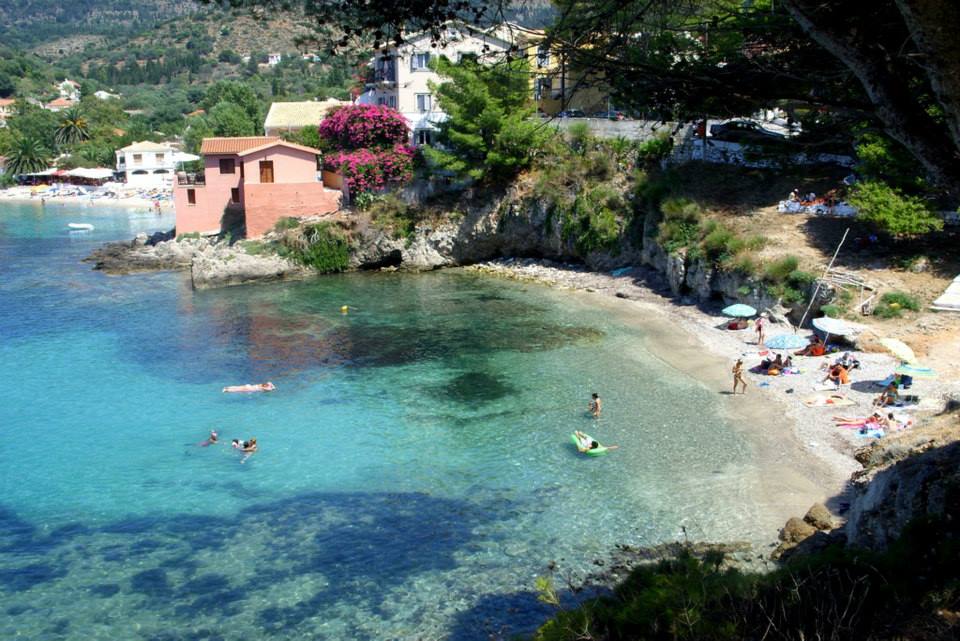Assos a magical village in Kefalonia island
Nestled on the rugged northwest coast of Kefalonia, Greece’s largest Ionian island, lies the breathtaking village of Assos, a place that feels more like a dream than reality. Wrapped in the scent of pine trees and kissed by the crystal-clear waters of the Ionian Sea, Assos offers a rare kind of Mediterranean magic that feels untouched by time. Unlike the more tourist-heavy spots on the island, Assos has managed to retain its authentic charm, offering visitors a peaceful escape filled with striking natural beauty, warm hospitality, and an atmosphere that makes you want to stay forever.
If you’ve been searching for a place where traditional Greek island life blends harmoniously with stunning scenery, Assos might just be the hidden gem you didn’t know you were missing.
The Unique Geography of Assos
Assos is built on a narrow strip of land that connects the mainland of Kefalonia to a small peninsula, forming a sort of natural harbor protected by dramatic cliffs and emerald hills. This unique topography gives the village a sense of being wrapped in its own little world. To reach it, visitors must drive through winding mountain roads that offer panoramic views of the Ionian Sea. The descent into Assos feels like a cinematic reveal: suddenly, the village appears below, its colorful houses climbing the slope in tiers, facing a small pebbled beach and calm turquoise waters. The peninsula is crowned by the ruins of a Venetian fortress, creating a sense of history that silently watches over the village. The visual drama of this setting is simply unforgettable.
A Brief History of Assos
Assos has a rich past that stretches back centuries. It was once a significant administrative center during the Venetian rule of Kefalonia in the 16th century, which explains the impressive fortress that still stands today. The Venetians built the Assos Castle not only to protect the village from pirate attacks but also to establish a defensive presence in the region. The castle complex was among the largest in Greece and was considered a marvel of its time. Although much of it lies in ruins today, visitors can still explore its old walls, tunnels, and stone pathways, which tell silent stories of centuries gone by. The village itself has seen earthquakes, invasions, and periods of decline and revival, yet it always seems to rise again, holding on to its soul and traditions.
The Colors and Architecture of Assos
Walking through the village is like stepping into a painting. Assos is known for its pastel-colored houses, each adorned with vibrant bougainvillea, fragrant jasmine, and citrus trees that spill over stone walls. Shades of peach, lemon, mint green, and sky blue give the village a warm, cheerful aesthetic that changes with the light. The architecture is a mix of Venetian, Greek, and 20th-century island styles, with narrow alleyways, arched doorways, and small courtyards offering glimpses of daily life. Many houses were rebuilt following the devastating 1953 Ionian earthquake, which leveled much of Kefalonia. However, the restoration work was done with care and a deep respect for the village’s original spirit. The result is a visually cohesive and charming aesthetic that’s both inviting and photogenic.
What to Do in Assos
Strolling Through the Village
One of the best ways to experience Assos is simply to wander. The entire village can be explored on foot, and its compact layout makes it easy to soak in every detail. Morning is a perfect time to walk the quiet alleys, visit the small village church, and greet friendly locals who take pride in their home. In the late afternoon, golden hour transforms the village into a glowing wonderland, perfect for photography or just sitting quietly by the sea, watching the boats sway in the harbor.
Visiting the Assos Castle
The crown jewel of the village is undoubtedly the Venetian Castle of Assos. A steep but rewarding hike leads visitors through cypress and olive groves up to the ruins. Along the way, you’ll encounter breathtaking views of the village and the surrounding coastline. Once inside the fortress, you can explore its remnants, including the outer walls, guard posts, and even some of the original stone cisterns used to collect rainwater. Though the castle is largely in ruins, it retains a haunting beauty that speaks to its strategic importance and storied past. It’s advisable to wear comfortable shoes and bring water, especially during the warmer months.
Enjoying the Beach and Bay
Assos has a small but lovely pebbled beach, ideal for a calm swim in clear, shallow waters. The bay is naturally sheltered, making it safe and serene even on windy days. While the beach itself is modest, the surrounding scenery of green hills and pastel houses gives it an idyllic character. Sunbeds are minimal—this isn’t a party beach—but that’s precisely the appeal. If you prefer something more secluded, you can rent a kayak or small boat and explore nearby coves, many of which are only accessible from the sea.
Tasting the Local Cuisine
Despite its small size, Assos offers several excellent tavernas that serve up fresh and hearty Ionian cuisine. Local specialties include kreatopita (meat pie with filo pastry), grilled octopus, and bourdeto, a spicy fish stew. Don’t miss trying robola, a white wine native to Kefalonia, which pairs beautifully with seafood. Most meals cost between 15 to 25 euros per person, including a glass of wine or a light dessert. You’ll often be dining just meters from the sea, with views that are worth the trip alone.
Practical Tips for Visiting Assos
When to Go
The best time to visit Assos is between late May and early October. June and September are particularly pleasant, offering warm temperatures and fewer crowds. July and August can get busy, but the village rarely feels overrun thanks to its low-key atmosphere. Winter is quiet and many businesses close, so it’s not ideal unless you’re seeking solitude.
Getting There
Assos is about 45 minutes by car from Argostoli, the capital of Kefalonia. Public transport is limited, so it’s best to rent a car or hire a taxi for the day. The drive itself is stunning, with multiple photo stops along the way. You’ll need to navigate some narrow and winding roads, but they are well maintained and safe.
Where to Stay
There are a few charming guesthouses and boutique hotels in Assos, most offering sea views and traditional décor. Options include restored Venetian villas, family-run inns, and a few modern apartments tucked discreetly into the village landscape. Prices range from 80 to 150 euros per night depending on the season and room size. Booking early is highly recommended, especially for travel in peak months.
What to Pack
Light, breathable clothing is a must for summer months, along with comfortable walking shoes for exploring the castle and hilly paths. A hat and sunscreen are essential, as much of the village is exposed to direct sun. Don’t forget swimwear, a reusable water bottle, and a light sweater for cooler evenings. You’ll also want a good camera—every corner of Assos is a photo opportunity.
Why Assos Feels Like a Secret
There’s something quietly transformative about Assos. Maybe it’s the way the colors shift as the sun moves across the sky, or how the village slows you down without asking for anything in return. Here, you don’t feel the need to check your phone or rush through your itinerary. You just sit a little longer, sip your wine a little slower, and let the peaceful rhythm of village life take over. You might hear the occasional motorboat or the murmur of conversation at a taverna, but for the most part, it’s the rustle of leaves, the soft splash of water, and the hum of cicadas that fill your ears. This is a place where time stretches and deepens. Unlike more commercialized Greek destinations, Assos doesn’t try to entertain you with nightlife or high-energy attractions. Its magic lies in the absence of all that. It’s the silence between waves, the smile of a taverna owner who’s just brought you fresh figs, the way the light hits a crumbling wall at sunset.
Is Assos Worth the Journey?
If you crave authenticity, natural beauty, and a deeply soothing travel experience, then Assos is not only worth the journey—it’s likely to become a place you’ll return to in your memories again and again. It’s not for those seeking a whirlwind itinerary or loud nightlife, but for slow travelers, romantic souls, and lovers of simplicity, Assos delivers more than you could expect. Every stone pathway and blossoming flower seems to whisper, “stay a while longer.” And once you’ve been, it’s very likely that you will.
Images sourse:facebook iWonderful.Greece

